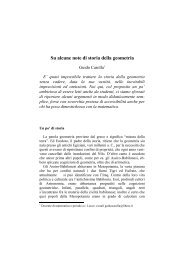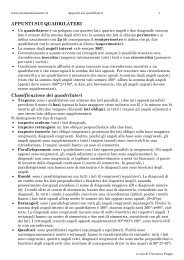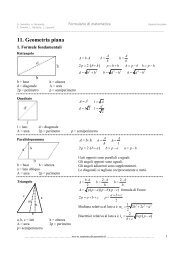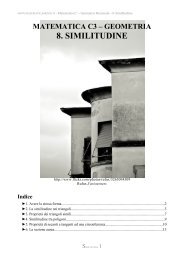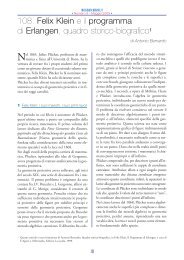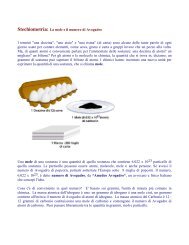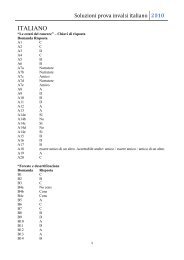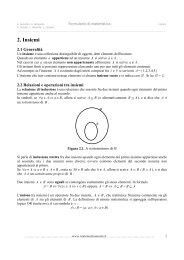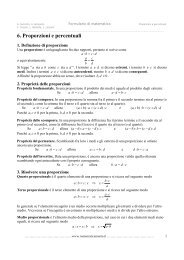Scarica la tesi Integrale di Feynman sui Cammini e Processi Stocastici
Scarica la tesi Integrale di Feynman sui Cammini e Processi Stocastici
Scarica la tesi Integrale di Feynman sui Cammini e Processi Stocastici
Create successful ePaper yourself
Turn your PDF publications into a flip-book with our unique Google optimized e-Paper software.
Si vede ora che <strong>la</strong> <strong>di</strong>fferenza tra l’operatore normale e quello normalmente<br />
or<strong>di</strong>nato è O(ɛ 2 ), e dunque nel limite ɛ → 0 è un infini<strong>tesi</strong>mo <strong>di</strong> or<strong>di</strong>ne superiore.<br />
E’ inutile ora sviluppare gli altri termini del<strong>la</strong> sommatoria essendo tutti questi<br />
O(ɛ 3 ). Dunque si è <strong>di</strong>mostrato che nel limite che ci interessa non c’è alcuna<br />
<strong>di</strong>fferenza tra l’operatore normale e quello normalmente or<strong>di</strong>nato, seppur questi<br />
<strong>di</strong>fferiscano per termini <strong>di</strong> commutazione.<br />
Ora il propagatore dell’integrale <strong>di</strong> <strong>Feynman</strong> si ottiene nel modo seguente:<br />
〈xn|e<br />
<br />
ɛ p<br />
2<br />
− ¯h 2m<br />
<br />
+V (x)<br />
|xn−1〉 = 〈xn| : e<br />
<br />
ɛ p<br />
2<br />
− ¯h 2m<br />
essendo l’operatore a secondo membro in forma nomale:<br />
<br />
〈xn|e<br />
iɛ p<br />
− ¯h<br />
2<br />
<br />
iɛ p<br />
2<br />
− ¯h 2m +V (x)<br />
− iɛ<br />
<br />
+V (x)<br />
: |xn−1〉 + O(ɛ 2 )<br />
|xn−1〉 =<br />
= 〈xn|e 2m · e ¯h V (x) |xn−1〉 + O(ɛ 2 <br />
=<br />
)<br />
d 3 iɛ −<br />
pne ¯h V (xn−1)<br />
iɛ p<br />
−<br />
〈xn|e ¯h<br />
2<br />
2m |pn〉〈pn|xn−1〉 + O(ɛ 2 )<br />
<br />
= d 3 iɛ −<br />
pne ¯h V (xn−1) iɛ p<br />
−<br />
· e ¯h<br />
2 n<br />
2m 〈xn|pn〉〈pn|xn−1〉 + O(ɛ 2 )<br />
<br />
=<br />
d3pn iɛ<br />
e− ¯h<br />
(2π¯h) 3 V (xn−1) −<br />
· e iɛ p<br />
¯h<br />
2 n<br />
2m · e i pn<br />
¯h<br />
(xn−xn−1) 2<br />
+ O(ɛ )<br />
=<br />
<br />
m<br />
2πiɛ¯h<br />
3<br />
2<br />
e i m<br />
¯h ( 2ɛ (xn−xn−1) 2 −ɛV (xn−1)) 2<br />
+ O(ɛ )<br />
Tale ultima espressione è l’analogo tri<strong>di</strong>mensionale dell’equazione (8) ottenuta<br />
nel<strong>la</strong> sezione 0.3, ed esprime dunque il propagatore quantistico come<br />
precedentemente annunciato.<br />
18





